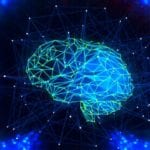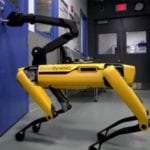 Music
Music  Music
Music  History
History 10 Less Than Jolly Events That Occurred on December 25
 Weird Stuff
Weird Stuff 10 Funny Ways That Researchers Overthink Christmas
 Politics
Politics 10 Political Scandals That Sent Crowds Into the Streets
 Weird Stuff
Weird Stuff Ten Bizarre Facts About The Doge Meme
 Our World
Our World 10 Ways Your Christmas Tree Is More Lit Than You Think
 Movies and TV
Movies and TV The 10 Coolest Stars to Set Sail on The Love Boat
 History
History 10 Things You Didn’t Know About the American National Anthem
 Technology
Technology Top 10 Everyday Tech Buzzwords That Hide a Darker Past
 Humans
Humans 10 Everyday Human Behaviors That Are Actually Survival Instincts
 Music
Music 10 Surprising Origin Stories of Your Favorite Holiday Songs
 History
History 10 Less Than Jolly Events That Occurred on December 25
 Weird Stuff
Weird Stuff 10 Funny Ways That Researchers Overthink Christmas
Who's Behind Listverse?

Jamie Frater
Head Editor
Jamie founded Listverse due to an insatiable desire to share fascinating, obscure, and bizarre facts. He has been a guest speaker on numerous national radio and television stations and is a five time published author.
More About Us Politics
Politics 10 Political Scandals That Sent Crowds Into the Streets
 Weird Stuff
Weird Stuff Ten Bizarre Facts About The Doge Meme
 Our World
Our World 10 Ways Your Christmas Tree Is More Lit Than You Think
 Movies and TV
Movies and TV The 10 Coolest Stars to Set Sail on The Love Boat
 History
History 10 Things You Didn’t Know About the American National Anthem
 Technology
Technology Top 10 Everyday Tech Buzzwords That Hide a Darker Past
 Humans
Humans 10 Everyday Human Behaviors That Are Actually Survival Instincts
10 Incredible Implications Of Quantum Technology
The consensus within the scientific community is that the first fully-functional quantum computer will be ready in roughly ten years—an event so significant that many experts are calling for a countdown to Y2Q: “years to quantum.”
Most people at least somewhat familiar with the basic ideas of quantum mechanics identify the field with a general “weirdness” that even the most seasoned quantum physicists find baffling. The mind boggles with visions of people walking through walls, time travel, and general uncertainty that threatens to uproot our most ingrained perceptions of truth and reality. Standard measurements become meaningless.
Given the enormous potential power of quantum technology, it should go without saying that those who possess this technology in the future will have a major advantage over those who do not—in the realms of politics, finance, security, and more. Companies such as Amazon, Microsoft, and Intel are anxiously looking towards implementing “quantum-safe cryptography,” since these companies (not to mention national governments) are concerned that hackers utilizing quantum power could spell the downfall of their firms.
And since we can say with a great deal of certainty that quantum computing will soon be here to stay, it is worth understanding what exactly this means for the future, and what incredible new (and sometimes frightening) possibilities quantum technology will bring.
Here are ten incredible implications of quantum technology.
10An Exponential Increase in Computational Speed

First, a (very) brief introduction: The computer on which you are reading this operates on the same fundamental technology that practically every computer in the world currently uses. It is a finite, binary world, in which data is encoded into bits—commonly referred to as 0s or 1s—which can only exist in one of two finite states (on or off). Quantum computation, on the other hand, utilizes “qubits,” which can exist in a practically limitless number of states simultaneously. (Generally speaking, n qubits can exist in 2^n different states simultaneously.)
If a “regular” computer is fed a sequence of thirty 0s and 1s, there are roughly one billion possible values of that sequence—and a computer using regular bits would have to go through each combination individually, requiring a great deal of time and memory. A quantum computer, on the other hand, would be able to “see” all one billion sequences at once—drastically reducing computational time and effort.
In fact, quantum computers will be able to complete in a matter of seconds, calculations that would take today’s best supercomputers thousands of years.
9Discovering New and More Effective Drugs
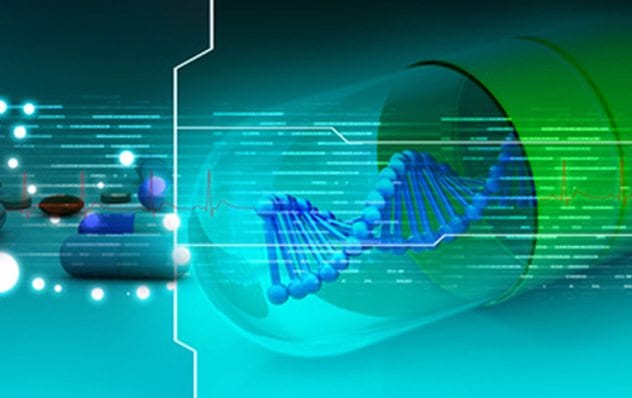
DNA sequencing came about thanks in part to sharp increases in computational power, as predicted by Moore’s Law. Now, we are about to enter an entirely new era of healthcare thanks to quantum computing.
While there is an astonishingly large number of impressive drugs on the market, the rate at which they can be produced, as well as their effectiveness in treating specific ailments, is surprisingly limited. Even with recent increases in speed and accuracy, these gains are purely incremental due to the limitations of standard computers.
With an organism as complex as the human body, there are countless ways in which a drug can react to its environment. Add to that the limitlessness of genetic diversity at a molecular level, and potential outcomes for non-specific drug treatments skyrocket into the billions.
Only quantum computers will have the ability to examine every possible scenario regarding drug interaction and present not only the best possible plan of action but also an individual’s chances of success with a particular drug—through a combination of more accurate and expedited DNA sequencing and a more rigorous understanding of protein folding.
These same innovations—especially regarding protein folding—will also inevitably lead to a better understanding of how life functions in general, which will subsequently lead to far more precise treatments, better drugs, and better outcomes.
8Limitless Security

In addition to facilitating great leaps forward in medicine, quantum technology also brings the possibility of virtually unbreakable cyber security barriers and super secure long-distance communication.
Within the world of quantum weirdness, exists a phenomenon known as “quantum entanglement,” in which two or more particles are mysteriously connected, regardless of the medium that exists between them and without any identifiable signaling. This is what Einstein famously referred to as “spooky action at a distance.” And since there is no tangible medium through which these two particles communicate, signals encoded using entangled particles would be impossible to intercept. The science needed for this technology is still underdeveloped; however, such communication would have an enormous impact on private and national security.
Drastically increased computing speed would also lend a hand to increased cybersecurity, since the exponentially greater processing power of quantum computers will allow them to withstand even the most sophisticated hacking methods, through quantum encryption. “Quantum computing will definitely be applied anywhere where we’re using machine learning, cloud computing, data analysis,” says Kevin Curran, a cybersecurity researcher at Ulster University. “In security that [means] intrusion detection, looking for patterns in the data, and more sophisticated forms of parallel computing.” Quantum computers would essentially be able to anticipate the “moves” of a hacking computer by millions—possibly billions—of steps ahead.
7Limitless Hacking

Of course, with great power comes great responsibility, and the same quantum power that will allow encryption to be taken to new heights could potentially allow hackers to effortlessly unravel the most elaborate security measures put in place by relatively primitive machines.
Today’s most elaborate cryptographic techniques tend to be based on extraordinarily difficult mathematical problems. And while these problems are enough to deter most binary supercomputers, they would be easily cracked by a quantum computer. A quantum computer’s ability to find patterns in enormous data sets with incredible speed will allow them to factor large numbers (a feat that remains perhaps the greatest barrier for hackers), which today’s computers can only do by trying option after option until one “fits.” With qubits and quantum superposition, all possible options would be able to be tested simultaneously.
Indeed, it took roughly two years and hundreds of computers working simultaneously to unlock a single instance of the RSA-768 algorithm (which has two prime factors and requires a key that is seven hundred and sixty-eight bits long). A quantum computer would be able to complete the same task in a fraction of a second.
6Fine-tuned atomic clocks and object detection
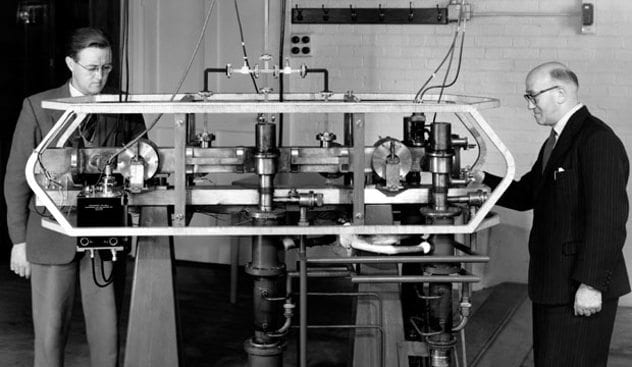
Atomic clocks are not just used to assist in everyday time-keeping. They are essential components of much of today’s technology, including GPS systems and communications technology.
One does not usually think of atomic clocks as needing more fine-tuning. The most accurate atomic clocks operate by utilizing the oscillations of microwaves emitted by electrons when they change energy levels. And the atoms used in the clocks are cooled nearly all the way to absolute zero—allowing for longer microwave probe times and subsequently more accuracy.
Newer atomic clocks utilizing modern quantum technology, however, will be so accurate that they will be able to be used as ultra-precise object detectors—sensing minuscule changes in gravity, magnetic fields, electrical fields, force, motion, temperature, and other phenomena that naturally fluctuate in the presence of matter. These changes would then be reflected by changes in time. (Recall that space, matter, and time are inextricably connected.)
This fine-tuned detection will assist in the identification and removal of underground objects, tracking submarines far below the surface of the ocean, and would even make navigation and automatic driving far more accurate, since software would be able to better distinguish between cars and other objects.
As David Delpy, the leader of the Defense Scientific Advisory Council in Britain’s defense ministry puts it, “You can’t shield gravity.”
5Financial Markets
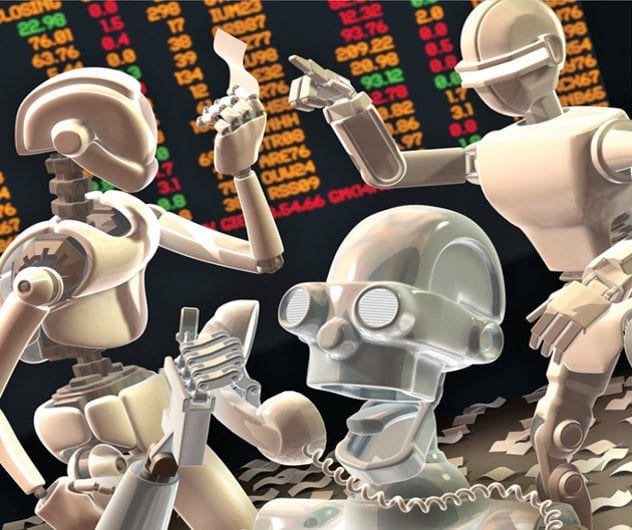
In the interconnected world of finance, speed is of the utmost importance. And a surprisingly large number of issues faced by the financial industry (many of them stemming from a lack of computational speed) remain unsolvable. Even the most powerful “regular” computer using 0s and 1s is incapable of even roughly forecasting future financial and economic events, and is unable to solve highly complex problems having to do with option pricing in a rapidly-shifting and evolving marketplace.
For example, many stock options require complex derivatives that are path-dependent—meaning that the option’s payout is ultimately determined by the path of the underlying asset’s price. Attempting to map and anticipate every possible “path” for an option is far too overwhelming of a task for today’s machines. However, given their speed and agility, quantum computers would theoretically be able to identify an incorrectly-priced stock option and exploit it for its owner’s gain before the market shifted in any meaningful way.
This kind of power could, of course, wreak havoc on the market and heavily skew favor towards the minority of firms owning and operating supercomputers—at the expense of individual traders and firms unable to purchase such technology.
4Mapping the Human Mind
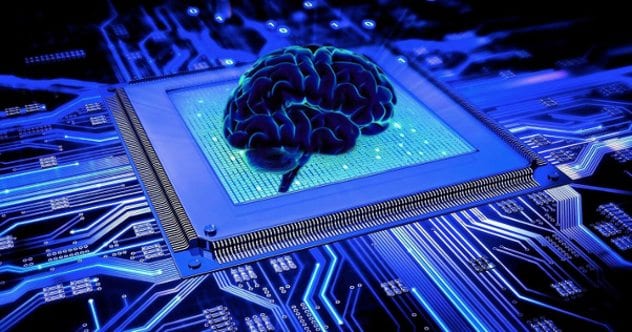
For all the amazing advancements that have taken place in the realm of neuroscience and cognition over the past several decades, scientists still know startlingly little about how the mind works. One thing we do know, however, is that the human brain is one of the most complex entities in the known universe, and that to truly understand all it can offer will require a new type of computational power.
The human brain is composed of about 86 billion neurons—cells that communicate small bits of information by firing rapid electrical charges. And while the electrical underpinning of the human brain is reasonably well understood, the mind remains a mystery. “The challenge,” says neurobiologist Prof Rafael Yuste of Columbia University, “is precisely how to go from a physical substrate of cells that are connected inside this organ, to our mental world, our thoughts, our memories, our feelings.”
And in their attempt to understand the mind, neuroscientists have relied heavily on the analogy of a computer, since the brain turns sensory data and inputs into relatively predictable outputs. And what better way to understand the workings of a computer than with a computer?
For Dr. Ken Hayworth, a neuroscientist who maps slivers of mouse brain, “to image a whole fly brain it is going to take us approximately one to two years. The idea of mapping a whole human brain with the existing technology that we have today is simply impossible” without the power of quantum computing.
3Discovering Distant Planets

It should come as no surprise that quantum computing will be wildly useful when it comes to space exploration, which often requires the analysis of enormous data sets. Using quantum processors cooled to 20 millikelvin (close to absolute zero), NASA engineers plan to use quantum computing to solve highly complex optimization problems involving billions of pieces of data.
For instance, NASA scientists will be able to take advantage of tiny fluctuations in quantum waves to detect minute, distant heat differentials emitted by otherwise invisible starts, and perhaps even black holes.
NASA is already using the general principles of quantum computing to develop safer and more efficient methods of space travel—especially when it comes to sending robots into to space. NASA tends to plan their robotic missions into space roughly ten years in advance, and their goal is to use quantum optimization to create a super accurate forecast of what will happen during the mission—in order to anticipate every possible outcome and then create contingency plans for each one (again, using optimization strategies).
More careful and precise planning of robot missions will also lead to more efficient battery use, which is one of the major limiting factors when it comes to robotic space missions.
2Genetics

The completion of the Human Genome Project in 2003, brought forth a new era in medicine. Thanks to a thorough understanding of the human genome, we can tailor complex treatments specifically to an individual’s specific needs.
Despite how much we know about the intricacies of human DNA, we still know surprisingly little about the proteins DNA codes for.
Enter quantum computation, which will theoretically allow us to “map proteins” the same way we map genes. In fact, quantum computing will also allow us to model complex molecular interactions at an atomic level, which will be invaluable when it comes to pioneering new medical research and pharmaceuticals. We will be able to model over 20,000 proteins and simulate their interactions with a plethora of different drugs (even drugs that have not been invented yet) with pinpoint accuracy. Analysis of these interactions (again aided by quantum computing and advanced optimization algorithms) will likely lead us to new cures for currently incurable diseases.
The speed of quantum computing will also assist in the use and analysis of “quantum dots”—tiny semiconductor nanocrystals only a few nanometers in length that are currently being used at the forefront of cancer detection and treatment.
Additionally, quantum computers could be able to determine if mutations in DNA—which are currently believed to be completely random—actually happen due to quantum fluctuations.
1Material Science and Engineering
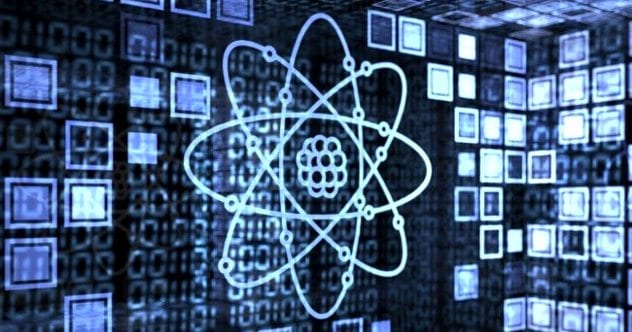
It should go without saying that quantum computing has massive implications for the fields of material science and engineering since the power of quantum computation is best suited for new discoveries at the atomic level.
The power of quantum computing will allow for the utilization of increasingly sophisticated models that will map how molecules assemble and crystallize to form new materials. Such discoveries leading to the creation of new materials would subsequently lead to the creation of new structures, with implications in the realms of energy, pollution control, and pharmaceuticals.
“When an engineer builds a dam or an aeroplane, the structure is first designed using computers. This is extremely difficult at the size scale of molecules or atoms, which often assemble in non-intuitive ways,” explains Graeme Day, a Professor of Chemical Modeling at the University of Southampton. “It is difficult to design at the atomic scale from scratch and the failure rate in new materials discovery is high. As chemists and physicists trying to discover new materials, we often feel like explorers without reliable maps.”
Quantum computation will provide a much more “reliable map,” by allowing scientists to simulate and analyze atomic interactions with incredible precision, which in turn would lead to the creation of entirely new and more efficient materials—without the trial and error that inevitably comes with attempting to construct new materials on a larger scale. This means we will be able to find and create better superconductors, more powerful magnets, better energy sources, and much more.

